Linggu Temple – Ticket Price, Opening Hours, Location, and Highlights
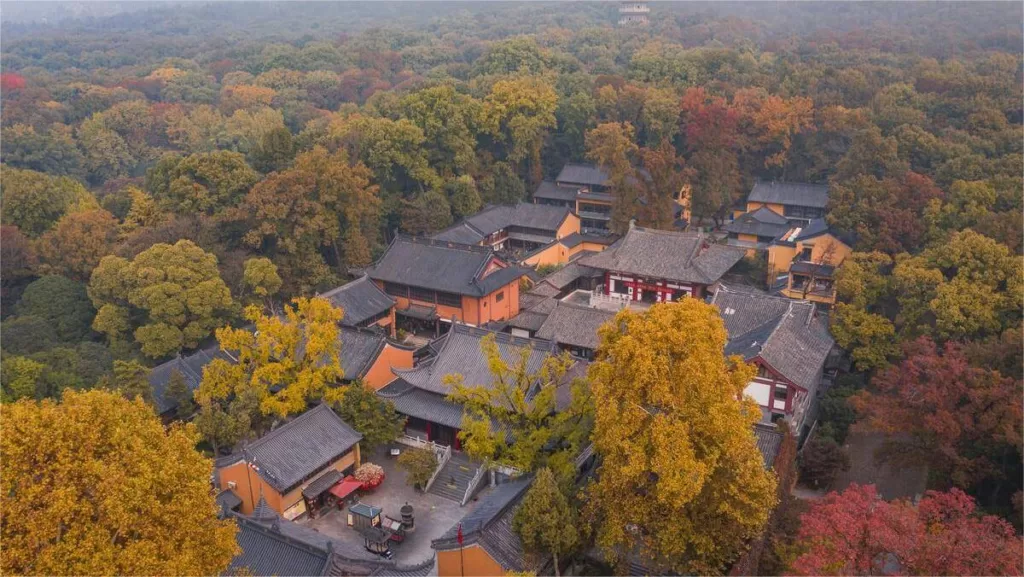
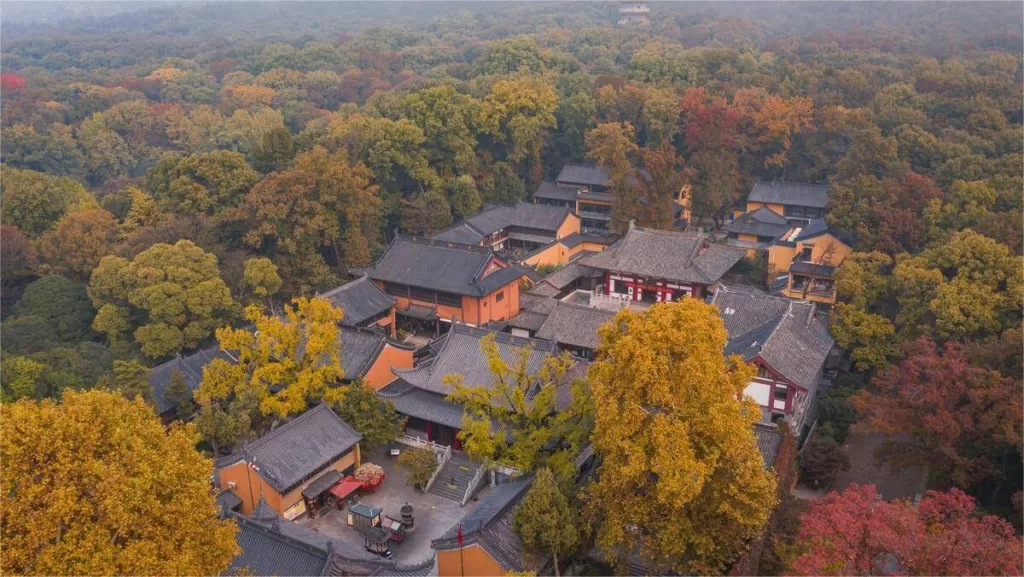
Linggu Temple (灵谷寺), originally known as Kaishan Temple, has a storied history that dates back to its inception in the year 515. During the Liang Dynasty, Emperor Wu ordered the construction of Kaishan Temple at the foot of Purple Mountain to honor the venerable monk Baozhi, who was buried there. To commemorate Baozhi, Emperor Wu’s daughter, Princess Yongding, built the Baozhi Pagoda. Furthermore, Emperor Wu erected Kaishan Temple in front of the Baozhi Pagoda.
In the 14th year of the Hongwu reign during the Ming Dynasty (1381), Kaishan Temple was relocated and extensively rebuilt, officially being renamed Linggu Temple. Initially covering an area of 500 mu, Linggu Temple has been a place of spiritual significance for over five centuries. The temple complex now features various architectural structures, including a decorative screen, a mountain gate, a front hall, the Main Hall, the Guanyin Pavilion, and the Xuanzang Institute. Among the relics it houses, one of the most revered is a portion of the skull bone belonging to the eminent monk Xuanzang, making Linggu Temple one of the most renowned and respected temples in Nanjing.
Table of Contents
- Basic Information
- Location and Transportation
- Highlights of Linggu Temple
- Vlog about Linggu Temple
- Useful Tips Summarized from Reviews
- Attractions Near Linggu Temple
- Other Temples in Nanjing
Basic Information
| Estimated Length of Tour | 2 hours |
| Ticket Price | 35 RMB |
| Opening Hours | 6.30 – 18.30 (1st February – 30th November) 7.00 – 17.30 (1st December – 31st January) |
| Telephone Number | 0086-025-84437786 |
Location and Transportation
Linggu Temple is situated in the northeastern part of Nanjing, the capital city of Jiangsu Province, China. Specifically, it is located at the foot of Mount Zhongshan, near the eastern shore of Xuanwu Lake. To get there, you can choose the following ways:
Bus: Take bus 202, Tourist line 4 or 5, get off at Linggu Temple Scenic Area Stop (灵谷寺景区), and walk about 100 meters to the north to reach the temple.
Metro: The nearest metro station to the Linggu Temple is Zhongling Street on Line 2 (钟灵街). After getting out of the station from Exit 1, you still need to walk about 1.2 kilometers to the north to reach the temple.
Highlights of Linggu Temple
Linggu Pagoda

The Linggu Pagoda is located in the temple’s rear courtyard and is constructed using reinforced concrete and Suzhou Jinshan granite. Originally known as the Monument to the Fallen Soldiers, it was built in 1931 and holds a vital place in the Monument Cluster. According to records from the “Committee of the Prime Minister’s Mausoleum,” this pagoda was constructed after the Northern Expedition and the founding of Nanjing as the capital city following the unification of China. The government recognized the efforts of the living and the sorrow of the fallen. As a result, a decision was made to collect the remains of the fallen soldiers and build a cemetery to console their spirits.
Temple Architecture

Linggu Temple’s mountain gate consists of three archways, symbolizing the “Three Gates to Liberation”: the gate of emptiness, the gate of the formless, and the gate of non-activity. Facing the mountain gate is the Hall of the Heavenly King, which houses statues of Maitreya, Vaiśravaṇa, and the Four Heavenly Kings. The central hall of Linggu Temple is the Mahavira Hall, serving as the temple’s spiritual core. The main deity enshrined here is Shakyamuni Buddha, flanked by his two prominent disciples, Mahakasyapa and Ananda. The north wall of the Mahavira Hall has a seated statue of Avalokiteshvara Bodhisattva, while the west wall features a statue of Kṣitigarbha Bodhisattva.
Memorial Hall of Martyrs

The Memorial Hall of Martyrs, located adjacent to Linggu Temple in Nanjing, China, is a solemn and dignified tribute to the national heroes and soldiers who sacrificed their lives for the country. The hall houses exhibitions, sculptures, and commemorative plaques that honor their memory and commemorate their bravery. Visitors can pay their respects, reflect on the sacrifices made, and gain a deeper appreciation for the history and sacrifices associated with the Memorial Hall. It serves as a solemn reminder of the courage and selflessness displayed by those who dedicated their lives to the nation, creating a space for reflection, gratitude, and remembrance.
None-Beam Hall

The None-Beam Hall is one of the few remaining buildings from the ancient Linggu Temple during the Ming Dynasty. Due to its use of brick and stone arches, it does not require wooden beams, hence the name “None-Beam Hall.” Built in the 14th year of the Hongwu reign (1318) during the Ming Dynasty, this hall, facing north, is set on a platform in front, with a spacious terrace and a width of five bays and a depth of three bays. The hall’s dimensions are impressive, with a height of 22 meters, a width of 53.8 meters, and a length of 37.85 meters. It is the largest remaining hall without rafters in China. Historical records state that during the Ming Dynasty, the hall enshrined three great Buddhas, with twenty-four heavenly deities on each side, and was used to store scriptures. Unfortunately, during the Xianfeng era of the Qing Dynasty, many of Linggu Temple’s structures were destroyed during conflicts involving the Qing and Taiping forces, and only this brick-structured hall survived.
Xuanzang Institue

The Xuanzang Institute was originally established as the Xuanzang Monk Memorial Hall in 1973. It was later expanded and transformed into the Xuanzang Institute in 2006. Inside the building, there stands a statue of Xuanzang Monk, and an incense burner pagoda holds a portion of his skull bone. The hall serves as a tribute to his significant contributions to Chinese Buddhism and his legendary journey to India to retrieve Buddhist scriptures. Inside the memorial hall, visitors can find statues, relics, and displays depicting Xuanzang’s life and achievements.
Vlog about Linggu Temple
Useful Tips Summarized from Reviews
Sunset Viewing at Linggu Pagoda: Arrive at Linggu Pagoda before 5:00 PM for a great view of the sunset. Enjoy the lush trees of Zhongshan Scenic Area and a distant view of towering buildings.
Ginkgo Trees in November: November is the best time to witness the stunning transformation of ginkgo trees, turning them into a vibrant yellow.
Osmanthus Blossoms from September to October: Visit Linggu Temple between September and October to witness the blooming osmanthus flowers, a perfect time for capturing the beauty of the “Osmanthus King of Jinling.”
Firefly Watching in July: The ideal time to observe fireflies is in the evening from 7:00 PM to 9:00 PM. The best location is near Bao Gong Pagoda and Zhigong Hall.
Vegetarian Noodles (Su Mian) Recommendations: There are two places to try Su Mian (Vegetariannoodles): one outside the temple (priced at 30 yuan/bowl) and one inside (in the temple behind the main hall on the right, one level down, priced at 10 yuan/bowl). The taste is decent, but it’s only available during meal times, starting around 11:10 AM.
Avoid Driving to Linggu Temple: Avoid driving to Linggu Temple due to high parking fees (30 yuan per hour).
Attractions Near Linggu Temple
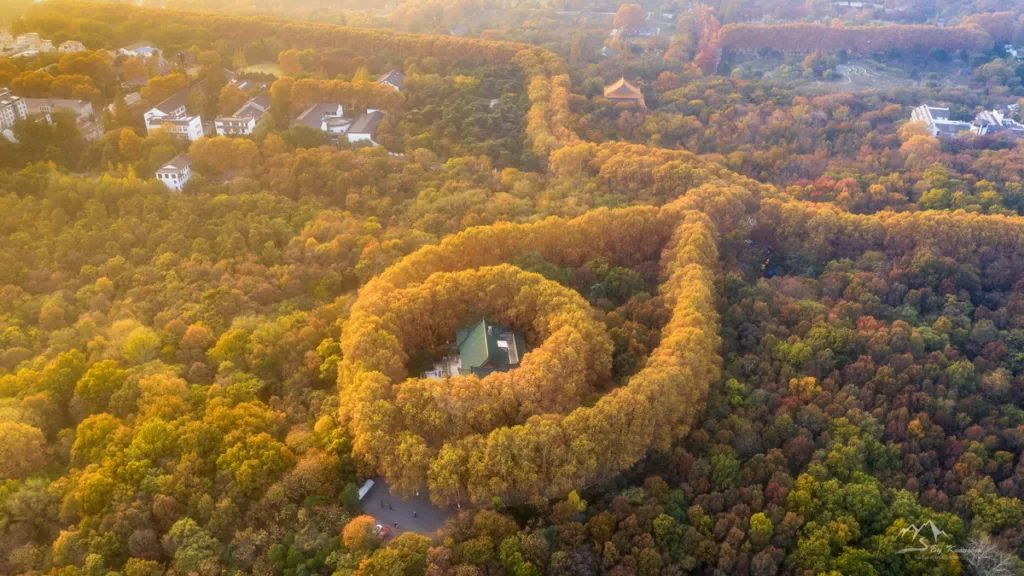
Meiling Palace – The Residence of the Former First Lady
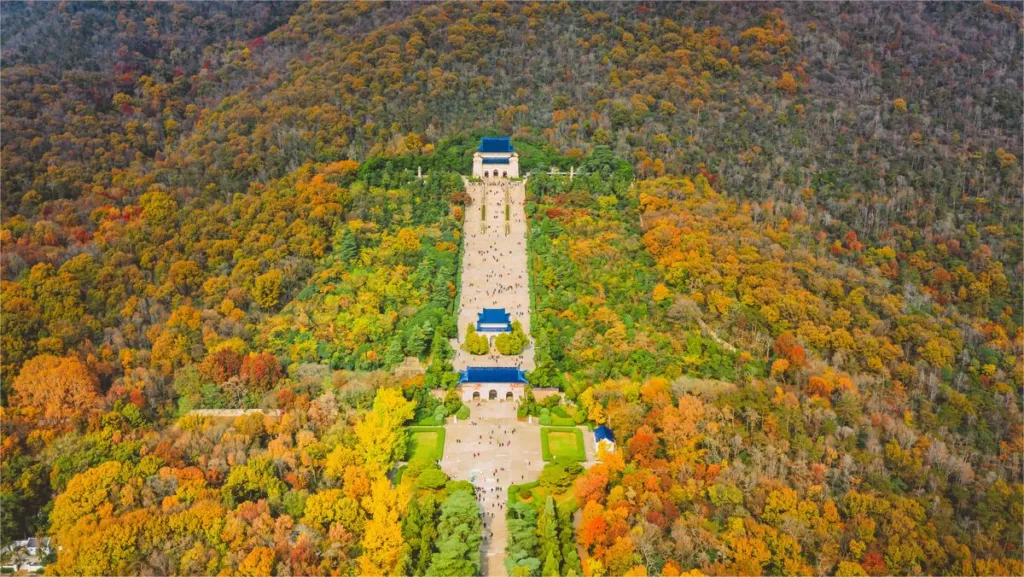
Sun Yat-Sen Mausoleum – Father of Modern China

Ming Xiaoling Mausoleum – Founder of Ming Dynasty

Meihua Mountain Scenic Area – Manificent Plum Blossom
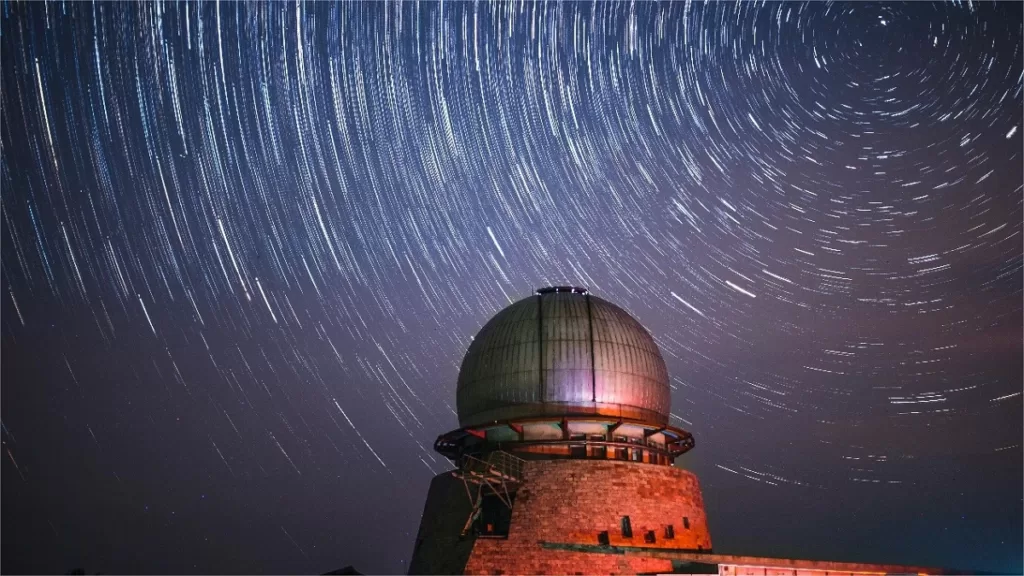
Purple Mountain Observatory – A Renowned Astronomical Research Institution

Nanjing Botanical Garden – Over 10,000 Plant Species
Other Temples in Nanjing

Niushoushan Temple – A Rebuilt Ancient Temple

Jiming Temple – Built in 238 A.D.
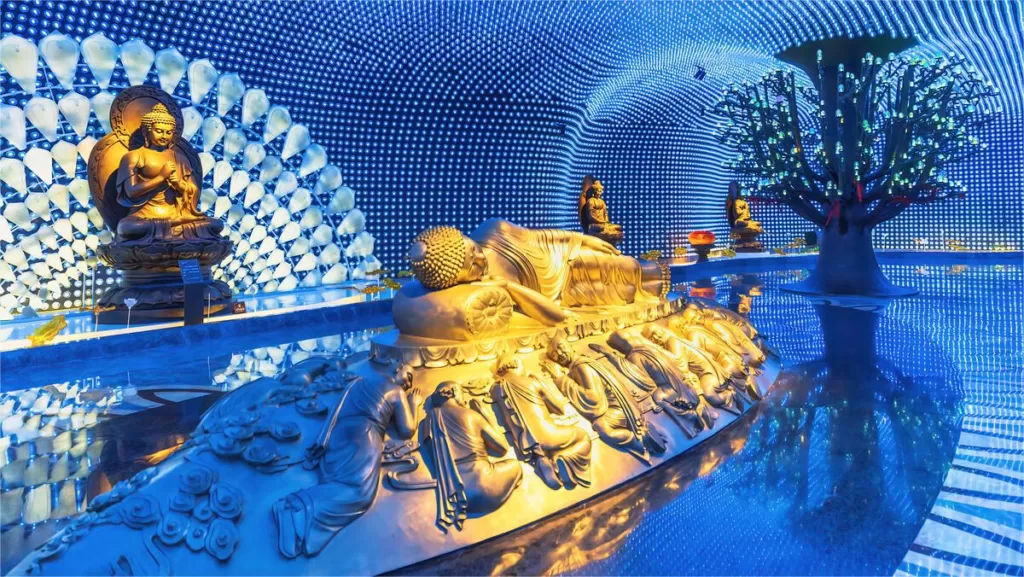
Bao’en Temple – Bulilt in the 4th Century
Jiangsu historical sites, Nanjing attractions